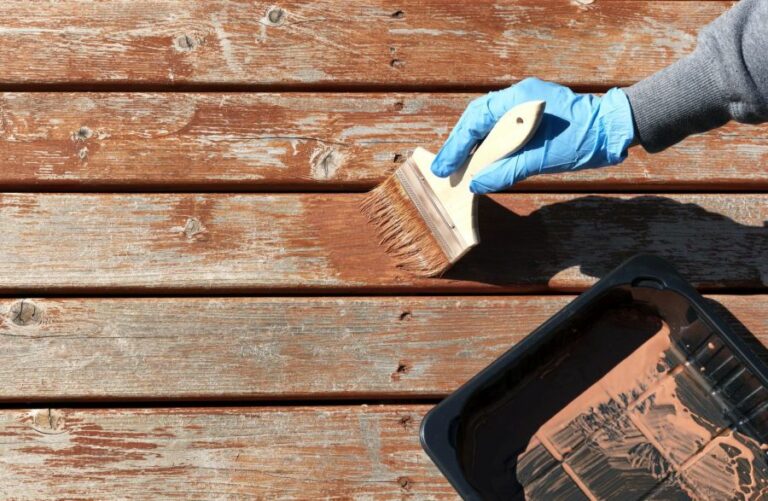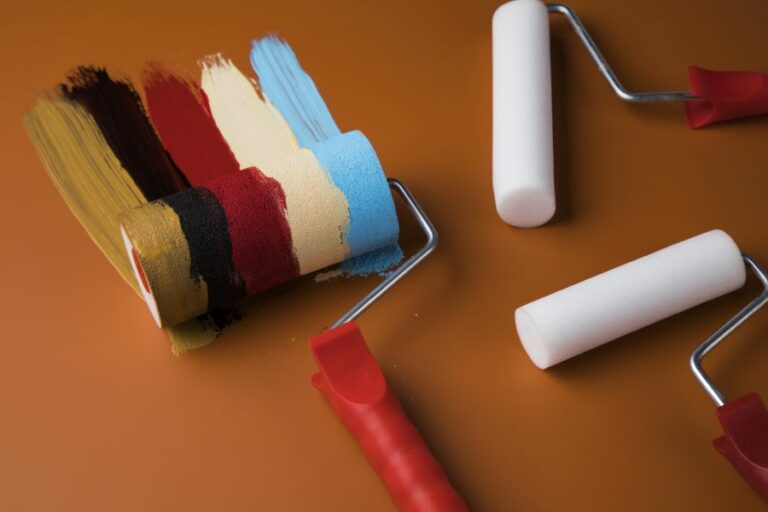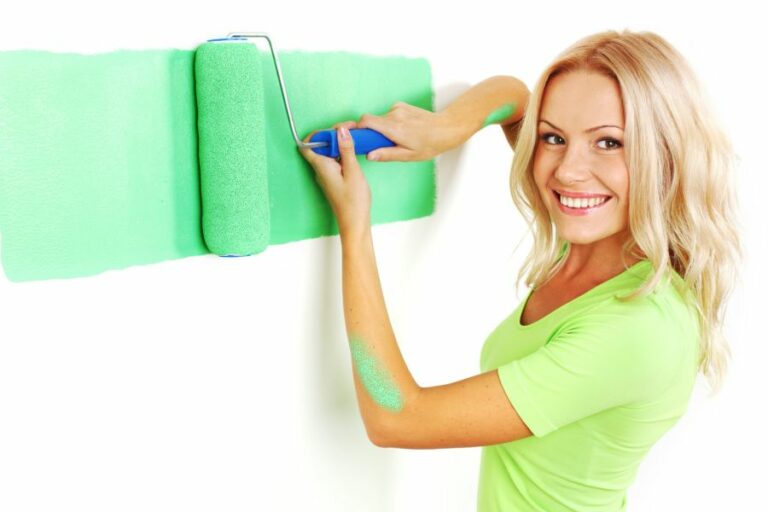Outdoor Door Paint, 25 Things You Should Know
Let’s unravel the secrets to achieving an outstanding exterior door transformation! Whether you’re trying to improve your home’s curb appeal, increase its resale value or showcase your personality, this post will explore the best paint and techniques for every need. I will unveil the top colors, quick tips, and hacks for flawless results that make your front door stand out in the neighborhood.
Outdoor door paint:
Choosing the right paint and finish is crucial for an outdoor door’s appearance, durability, and lasting power. Consider factors like door material, climate, and finish preference when selecting water-based (latex) or oil-based (alkyd) paints. Latex paint is eco-friendly but less suitable for high-humidity areas, while oil-based paint is more durable but has higher VOC emissions. Gloss, semi-gloss, and satin finishes offer varying levels of reflectivity and protection. Properly prepare your door by removing hardware, cleaning, sanding, repairing damage, and applying primer. Use high-quality brushes and apply thin coats of paint, following the wood grain before applying multiple coats, sanding between each coat.

Discover expert advice on selecting the perfect outdoor paint for your front door. Learn about durability, finishes, color choices, and essential preparation tips to ensure a flawless, lasting result that enhances your home’s curb appeal.
Contents
- 1 Exterior Door Painting Solution
- 2 Which Type of Paint is Suitable for an Exterior Door?
- 3 What is the most suitable paint variety for painting an exterior door?
- 4 Is It Necessary to Apply Primer on an Exterior Door Prior to Painting?
- 5 What Type of Paint Should Be Utilized on an Exterior Metal Door?
- 6 What is the Most Suitable Paint for a Front Door Exposed to Abundant Sunlight?
Exterior Door Painting Solution
• Choosing the Right Paint for Your Door
When painting your outdoor door, selecting the right paint is crucial. This decision will affect not only the appearance of your door but also its durability and lasting power. There are several factors to consider when choosing the appropriate paint, such as:
- The material of your door
- The climate in your area
- Your preferred finish
– Type of Paint
Two main types of paint suitable for outdoor doors are water-based (latex) and oil-based (alkyd) paints. Both options have their pros and cons.
Water-Based (Latex) Paint
Latex paints have gained popularity in recent years due to their environmental friendliness, easy clean-up, and lower VOC (volatile organic compounds) emissions. Additionally, they dry quickly, allowing your door to be closed and operational soon after the painting is completed.
However, latex paints may not be the best choice in areas with high humidity, as they tend to absorb moisture and can become less adherent over time.
Oil-Based (Alkyd) Paint
Oil-based paints have been the traditional choice for outdoor doors due to their excellent durability and resistance to moisture. They can withstand extreme weather conditions better than their latex counterparts. However, they do emit higher levels of VOCs and require mineral spirits for clean-up.
– Finish
Choosing the right finish for your door paint is essential for both aesthetics and protection. There are three main finishes to choose from: gloss, semi-gloss, and satin.
Gloss
Gloss finishes offer a high level of shine and reflectivity, giving your door a striking appearance. In addition, the high sheen provides excellent resistance to wear and tear, making it an excellent choice for outdoor doors.
Semi-gloss
Semi-gloss finishes are slightly less reflective than gloss but still offer good protection against wear and tear. This finish is ideal if you prefer a more subtle sheen on your door.
Satin
Satin finishes are less reflective than both gloss and semi-gloss, providing a subtler appearance. While satin finishes might not be as durable as gloss or semi-gloss, they still offer reasonable protection for your door.
• Preparing Your Door for Painting
Proper preparation is key to ensuring a professional-looking and long-lasting paint job. Follow these steps to prepare your outdoor door for painting:
- Remove Hardware and Weather Stripping: Remove any door hardware, such as handles and locks, as well any weather stripping.
- Clean the Door: Use mild detergent and water to clean the door thoroughly. This will help remove dirt, grime, and debris that can interfere with the paint’s adhesion.
- Sand the Surface: Sanding will create a smooth surface for the paint to adhere to. Use a fine-grit sandpaper to remove any existing paint or finish, and then wipe away any dust with a tack cloth.
- Repair Damage: Fill any holes or cracks with wood filler, and then sand the repaired areas smooth. This will ensure a uniform appearance when the door is painted.
- Apply Primer: A quality primer will help the paint adhere better and increase its durability. Make sure to choose a primer that is compatible with the type of paint you are using, and follow the manufacturer’s instructions to apply it correctly.
• Painting Your Door
Once your door is prepped, you can begin painting. Follow these steps for a successful paint job:
- Choose a Suitable Brush or Roller: High-quality brushes or rollers ensure smooth and even paint application. I recommend using a natural-bristle brush for oil-based paint and a synthetic brush for latex.
- Start with a Thin Coat: Begin by applying a thin coat of paint to your door. This will help prevent runs and drips and allow for a more even paint buildup.
- Paint with the Grain: When painting, always follow the direction of the wood grain. This will help the paint blend more seamlessly with the door and minimize visible brush strokes.
- Apply Multiple Coats: Depending on the paint and the color, you may need to apply multiple coats to achieve the desired level of coverage and protection. Allow each coat to dry according to the manufacturer’s instructions before applying another one.
- Sanding Between Coats: For an even smoother finish, you can sand the door lightly between coats using fine-grit sandpaper. Make sure to wipe away any dust with a tack cloth before applying the next coat.
• Maintaining Your Outdoor Door
Regular maintenance will ensure that your outdoor door’s paint job lasts longer and continues to look its best. Perform periodic inspections of your door for signs of wear or damage, such as peeling or chipping paint, and address any issues as they arise.
Clean the door with a gentle detergent as needed to remove dirt and grime.
With the right paint and proper care, your outdoor door can make a lasting impression on your home’s curb appeal. Following this comprehensive guide will help you achieve professional results and a beautifully painted door that stands the test of time.
Which Type of Paint is Suitable for an Exterior Door?
Exterior doors are the entry point to your home and a key element in its overall aesthetic appeal. As such, painting your door is a great way to achieve a fresh look and protect your house from the elements.
However, not all paints are created equal; I will discuss the factors to consider and the best types of paint to use when painting an exterior door.
• The Importance of Paint Durability
One of the most important factors to consider when choosing paint for your exterior door is its durability. Exterior doors are exposed to weather conditions, sunlight, and frequent use. This means that the paint should be able to withstand the test of both time and the elements.
When assessing durability, two main factors come into play: UV resistance and moisture resistance. The paint should effectively protect the door from the harmful effects of UV rays, which can cause fading and other damage.
Moisture resistance is another crucial aspect since moisture-resistant paint will prevent the door from swelling, warping, or otherwise becoming damaged due to water.
• Types of Exterior Door Paint
There are several types of paint that can be used on exterior doors. Each type has its own set of advantages and disadvantages based on factors such as application process, finish, and overall durability. The following are some of the most commonly used paints for exterior doors:
– Acrylic Latex Paint
Acrylic latex paint is a popular choice for exterior doors due to its durability, easy application, and low VOC levels, meaning it emits a low amount of potentially harmful chemicals into the atmosphere. This type of paint is water-based, making it more environmentally friendly than oil-based options.
Pros:
- Durable and weather-resistant
- UV resistant
- Quick drying time
- Low odor and low VOCs
Cons:
- Narrower color selection compared to oil-based paints
– Oil-Based Paint
Oil-based paint has long been popular for exterior doors, particularly for their smooth and glossy finish. Oil-based paint is more durable than water-based paint, with a longer-lasting finish that resists chipping and peeling.
However, oil-based paints emit higher levels of VOCs, which can lead to air pollution and may be harmful to humans and the environment.
Pros:
- Excellent durability
- Resistant to wear and tear
- Wide range of color options
Cons:
- Longer drying time
- High odor and VOC levels
- Requires mineral spirits for cleanup
– Exterior Door-Specific Paint
Some paint manufacturers produce paint specifically for exterior doors. These specialized paints usually have enhanced durability and weather-resistant properties, making them ideal for high-performance protection.
Pros:
- Specifically designed for exterior doors – Superior durability and weather resistance
Cons:
- Limited color options compared to other types of paint
- May be more expensive than alternative options
• Tips for Painting Your Exterior Door
The following are some practical tips to help you achieve the best results when painting your exterior door:
- Ensure proper surface preparation: Preparing your door properly is crucial to achieving a long-lasting, professional-looking finish. This involves thoroughly cleaning the door, filling any holes or cracks, sanding, and applying a suitable primer, if necessary.
- Choose the right paintbrush: Using a high-quality paintbrush suited for your selected paint type will help you achieve a smooth, even finish.
- Apply multiple thin coats: Applying multiple thin coats of paint will provide better coverage and durability than a single thick coat.
- Do not paint in direct sunlight or during extreme temperatures: Painting during cooler, overcast days are ideal for preventing the paint from drying too quickly, leading to uneven coverage or bubbling.
• Final Thoughts
Choosing the right paint for your exterior door is crucial in achieving a long-lasting, attractive finish. While no single paint type is perfect for every situation, considering factors such as durability, UV resistance, and moisture resistance will set you on the right path to success.
Acrylic latex paint is popular for its environmental benefits and good performance, while oil-based paint offers excellent durability and a smooth finish. Exterior door-specific paint can also be a great option for superior protection.
With the proper tools and attention to detail, you can transform your home’s curb appeal by painting your exterior door with the perfect paint.
What is the most suitable paint variety for painting an exterior door?
When it comes to painting exterior doors, it’s essential to choose the right type of paint to ensure durability and an attractive finish. With so many options available in the market, selecting the best paint can be a daunting task.
• Oil-Based Paints vs. Water-Based Paints
When painting an exterior door, you first need to make whether to use oil- or water-based paint. Both have their benefits, and the choice ultimately depends on the desired finish and durability.
– Oil-Based Paints
Oil-based paints have been around for decades and are known for their durability and rich finish. They are suitable for use on exterior doors because they form a hard and durable surface that can withstand harsh weather conditions, resisting scratches and water damage.
Pros:
- Provides a smooth and self-leveling finish
- Dries hard, making it less prone to chipping or peeling
- Resistant to water and mildew
- Takes longer to dry, allowing for better leveling
Cons:
- Longer drying time; can take 8-24 hours before recoating
- Requires mineral spirits or turpentine for cleanup
- Stronger odor
- Can yellow over time
– Water-Based Paints
Water-based paints, also known as latex or acrylic paints, are more environmentally friendly and have gained popularity in recent years. They are easier to work with and dry faster than oil-based paints but may not be as durable in the long run.
Pros:
- Quick drying, typically 2-4 hours before recoating
- Easy cleanup with soap and water
- Low odor
- Resistant to fading and yellowing
Cons:
- Not as durable as oil-based paint
- Less resistant to water and mildew
- May require more coats for full coverage
• Recommendations for the Best Paint to Use on an Exterior Door
Based on my experience in the industry, I recommend using high-quality oil-based paint for most exterior doors. Its durability and smooth finish make it an excellent choice for a long-lasting paint job. Here are a few top-rated oil-based paints to consider:
- Rust-Oleum Professional High-Performance Protective Enamel This paint is well-regarded for its durable, corrosion-resistant finish. It’s ideal for use on metal doors and trims and is available in various colors and sheens.
- Benjamin Moore Impervo Alkyd High Gloss For a high-gloss finish on wood and metal doors, this top-quality alkyd paint is an excellent choice. It has a long-lasting, high-gloss finish that resists fading and yellowing.
However, if you prefer water-based paint for its more straightforward application process and eco-friendliness, I recommend these options:
- Sherwin-Williams Emerald Urethane Trim Enamel This premium water-based enamel offers a durable finish that can withstand heavy use and harsh weather conditions. Its self-leveling properties result in a smooth and even finish on a variety of surfaces, including wood and metal doors.
- Behr Marquee Exterior Semi-Gloss This high-quality acrylic paint is known for its excellent coverage, resistance to fading, and easy application. It is suitable for wood, metal, and fiberglass doors.
• Tips for Painting Your Exterior Door
Regardless of the type of paint you choose, following these tips will help you achieve a professional finish on your exterior door:
- Proper surface preparation: Whether your door is new or has existing paint, make sure to clean and sand the surface to ensure smooth paint adhesion. For metal doors, it’s essential to remove any rust or corrosion.
- Use a primer: Priming the door ensures a better bond between the paint and the door’s surface and improved coverage and durability. Use high-quality oil-based or water-based primers, depending on your paint choice.
- Choose the right brush: Use a high-quality brush with nylon or polyester bristles for water-based paints and a natural bristle brush for oil-based paints. Alternatively, you can use a foam brush for a smooth finish on doors with intricate details.
- Apply multiple thin coats: To achieve an even and fully covered finish, apply multiple thin coats of paint. Let each coat dry per the manufacturer’s instructions before applying the next.
- Ensure proper drying conditions: Keep your work area well-ventilated and protected from dust or debris. Avoid painting on hot, humid, or rainy days as it can affect the paint’s drying and curing process.
With the right preparation, paint choice, and techniques, you can achieve a beautiful and long-lasting finish for your exterior door.
By considering the factors discussed in this article, you can select the best high-quality paint that will withstand the test of time and the elements, ensuring your door looks its best for years to come.
Paint Type | Pros | Cons |
|---|---|---|
Acrylic Latex | Water-based, easy cleanup, quick-drying, durable, resistant to fading and mildew | May not adhere well to certain surfaces and may need priming |
Oil-Based | High durability, excellent adhesion, smooth finish | Longer drying time, needs paint thinner to clean up, strong odor, potential environmental concerns |
Acrylic Enamel | Water-based, hard finish, resistant to chipping and wear | May not be ideal for all surfaces or require special surface preparation |
Semi-Gloss | Easy to clean, durable, resists stains and fading | May highlight surface imperfections, finish may not be appropriate for all styles |
Is It Necessary to Apply Primer on an Exterior Door Prior to Painting?
The short answer is yes. Priming an exterior door before painting is a crucial step in the process. By properly priming the door, you ensure that the paint will adhere to the surface, provide a smoother and more durable finish, and maintain the color for a longer period of time.
• Importance of Priming an Exterior Door
Before we delve into the different types of primers and how to apply them, let’s take a look at why it is essential to prime an exterior door before painting:
– Better Paint Adhesion
Priming creates a smooth, even surface for the paint to adhere to. This is particularly important for exterior doors as they are exposed to various weather conditions, leading to paint peeling, bubbling, or flaking if not properly adhered.
– Longer-lasting Paint Job
A well-primed surface will ensure that your paint job lasts longer without showing signs of wear and tear. This is particularly important for exterior doors, as they are constantly exposed to environmental factors that can cause paint to deteriorate quickly.
– Enhanced Color Quality
Priming helps seal the door’s surface, ensuring that the paint color is more vibrant and consistent. A primed surface ensures that the paint’s true color shines through without being absorbed or altered by the underlying material.
– Protection from Stains and Damage
Priming creates a barrier that prevents stains, dirt, and moisture from penetrating the surface of your door. This is particularly important for exterior doors made of wood or other porous materials, which can absorb moisture and lead to rot or mold issues if not properly sealed.
• Choosing the Right Primer
Several types of primers are available, each with unique characteristics and benefits. When choosing a primer for your exterior door, consider factors such as the material of the door, the existing color, and the paint you plan to use. Here are some common types of primers and their benefits:
– Oil-Based Primer
Oil-based primers are excellent for wood surfaces and can provide high adhesion, durability, and stain-blocking capabilities. They also work well on metal doors, providing a smooth and rust-resistant finish.
However, oil-based primers can take longer to dry and may not be compatible with some water-based paints.
– Latex-Based Primer
Latex-based primers are easy to clean up and dry quickly and are compatible with both latex and oil-based paints. They work well on most surfaces, including wood, metal, and masonry.
Latex-based primers may not be as durable or stain-blocking as oil-based primers, but they still offer excellent adhesion and are often easier to work with.
– Shellac-Based Primer
Shellac-based primers are known for their excellent stain-blocking abilities, particularly for wood surfaces with knots, tannins, or other natural blemishes. They dry quickly and adhere well to most surfaces but may not be the best choice for metal doors or surfaces exposed to high levels of moisture.
• How to Prime an Exterior Door: Best Practices
Follow these steps for a successful priming job:
- Clean the Door: Before applying primer, ensure that the door’s surface is clean and free from any dirt, dust, or debris.
- Lightly Sand the Surface: If the door has a glossy finish, lightly sand it with fine-grit sandpaper to create a more adhesive surface for the primer.
- Wipe Away Sanding Dust: Use a damp cloth to remove any sanding dust from the door’s surface.
- Apply Painter’s Tape: Protect any hardware or areas you do not want to be painted by applying painter’s tape around the edges.
- Choose the Right Primer: Consider the factors discussed above when selecting a primer for your specific door and paint.
- Apply Primer: Use a high-quality paintbrush, roller, or paint sprayer to apply an even layer of primer to the door’s surface. Allow adequate drying time, as recommended by the manufacturer.
- Inspect for Imperfections: After the primer has dried, check for any spots that may require additional primer or touch-ups.
- Sand and Clean, If Necessary: If any imperfections or drips are present, lightly sand the area and wipe it clean with a damp cloth.
In conclusion, priming an exterior door before painting is an essential step that should not be skipped. It will ensure better paint adhesion, a smoother and more durable finish, enhanced color quality, and added protection from stains and damage.
By following the guidelines outlined in this article, you can confidently prime your exterior door and achieve professional-looking results that will last for years to come.
What Type of Paint Should Be Utilized on an Exterior Metal Door?
When painting an exterior metal door, it is essential to use the right type of paint to ensure a durable, attractive finish that will protect the door and make it look its best for years to come.
• Types of Paints for Exterior Metal Doors
There are several types of paint suitable for use on exterior metal doors. These include:
– Oil-Based Paints
One of the most popular choices for metal doors, oil-based paints provide fantastic adhesion to the surface and long-lasting durability. These paints are known for their ability to withstand harsh weather elements and maintain a clean, glossy finish.
When using an oil-based paint, I recommend priming the door with a metal primer.
– Acrylic Latex Paints
Acrylic latex paints are water-based and offer several advantages when used on exterior metal doors. These paints dry faster than oil-based paints and emit lower levels of volatile organic compounds (VOCs), making them more environmentally friendly.
Acrylic latex paints offer excellent durability and color retention, ensuring a long-lasting finish on your door. As with oil-based paints, using a metal primer is strongly recommended before applying the acrylic paint.
– Direct-to-Metal (DTM) Paints
DTM paints are specifically formulated for use on metal surfaces without the need for a primer. These paints provide excellent adhesion to the substrate and resist rust and corrosion effectively.
DTM paints are available in both oil-based and acrylic latex formulations, thus giving you the option to choose based on your requirements and preferences.
• Preparing the Exterior Metal Door for Painting
Proper preparation of the metal door is critical to achieving a smooth, attractive, and long-lasting painted finish. Follow these steps to prepare your door for painting:
- Remove Hardware and Weatherstripping: Begin by removing any hardware or weatherstripping from the door. This will make it easier to paint the entire surface of the door and prevent any paint from getting on these parts.
- Clean the Door: Clean the surface of the door with mild detergent and water. Remove any dirt, grease, or grime, and then rinse the door thoroughly to remove any soap residue. Let the door dry completely before proceeding.
- Repair Damage: Inspect the door for any dents or scratches. Fill these areas with an appropriate filler or epoxy, and sand the patched areas smoothly.
- Sand the Door: Sand the entire surface of the door with 180-220 grit sandpaper to ensure proper paint adhesion. Wipe the door down with a tack cloth to remove any sanding dust.
- Apply Metal Primer: If you’re using oil-based or acrylic latex paint, apply a metal primer to the door’s surface. Allow the primer to dry according to the manufacturer’s instructions before proceeding with painting.
• Choosing the Right Painting Tools
Using high-quality tools is essential for a smooth, professional-looking finish on your exterior metal door. These include:
- High-quality paintbrushes: Choose a 2-2.5-inch angled brush made with synthetic bristles for acrylic latex paint or natural bristles for oil-based paint.
- Foam rollers: Use a 6-9-inch foam roller to apply paint over large, flat areas of the door.
- Paint tray: A paint tray is necessary for holding and rolling paint onto the foam roller for even application.
• Painting the Exterior Metal Door
Now that you’ve chosen the right paint, prepared the door, and gathered the necessary tools, it’s time to paint. Follow these steps for a professionally painted exterior metal door:
- Apply the First Coat: Using the angled brush, begin by cutting in the edges and any raised or recessed panels on the door. Next, use the foam roller to apply a thin, even coat of paint to the door’s flat surfaces. Make sure to follow the grain of the door when rolling the paint. Allow the paint to dry according to the manufacturer’s recommendations.
- Sand and Clean: After the first coat has dried, lightly sand the door’s surface with fine-grit sandpaper (220-320 grit) to remove any imperfections and improve paint adhesion for the second coat. Wipe down the door with a tack cloth to remove any sanding dust.
- Apply the Second Coat: Apply a second coat of paint following the same method as the first coat, using an angled brush to cut in edges and panels and a foam roller for large surfaces. Allow the second coat to dry thoroughly.
- Reattach Hardware and Weatherstripping: Once the paint is fully dry, carefully reattach any hardware or weatherstripping removed from the door.
By following these comprehensive steps, you will achieve an attractive, durable, and long-lasting paint job on your exterior metal door. With the appropriate choice of paint and meticulous attention to detail, your door will look better than ever and be protected from the elements for years.
Type of Paint | Description | Benefits |
|---|---|---|
Acrylic Latex Paint | Water-based paint that dries quickly and adheres well to metal surfaces | Easy to apply, low odor, and easy to clean up with soap and water |
Oil-based Paint | Slow-drying paint that provides a durable and smooth finish on metal surfaces | Resistant to chipping, fading, and weather conditions |
Alkyd Paint | A type of oil-based paint that cures to a hard, enamel-like finish | Excellent adhesion, durable, and resistant to stains, mildew, and dirt |
Direct-to-Metal (DTM) Paint | Paint specifically designed for metal surfaces, providing a strong bond and protection | Excellent adhesion, corrosion resistance, and weathering protection |
What is the Most Suitable Paint for a Front Door Exposed to Abundant Sunlight?
A front door is not only a vital component of your home’s exterior, but it also serves as the first impression for visitors. Due to its important role, selecting the appropriate paint for your front door is crucial.
The choice becomes even more significant when the door is exposed to a large amount of sunlight, as the UV rays can have damaging effects on its appearance and longevity.
• The Importance of UV-Resistant Paint
A door that receives a lot of sun is more susceptible to UV damage, leading to potential issues such as fading, brittleness, and cracking. To prevent such problems, selecting a paint specifically formulated to be resistant to ultraviolet radiation is essential.
Look for products that offer UV protection or are marketed as “fade-resistant” or “weather-resistant.”
• Acrylic Latex Paint and Its Advantages
Among the different types of paint available in the market, acrylic latex paint stands out as a leading option for a sun-exposed front door. Acrylic latex paint offers more than just superb durability; it is also eco-friendly and easy to work with.
Here are some notable benefits of using acrylic latex paint for your front door:
– Exceptional Durability and UV Resistance
Acrylic latex paint is known for its durability and resistance to various weather conditions, including sunlight exposure. Due to its unique formulation can withstand prolonged exposure to the sun, preventing fading and minimizing the risk of chipping and peeling.
– Low-VOC Content and Environmentally Friendly
Acrylic latex paint typically contains lower levels of volatile organic compounds (VOCs) than oil-based paint varieties.
By choosing low-VOC acrylic latex paint, you can reduce your carbon footprint and contribute to a cleaner environment while providing your front door with excellent sun protection.
– Quick Drying and Easy to Clean
Acrylic latex paint dries relatively quickly and does not leave a strong odor. This property enables a faster painting process and allows you to enjoy your newly painted front door without any lingering smell.
Additionally, acrylic latex paint is water-based, making cleaning any spills or brush marks easy with just soap and water.
• Oil-Based Paint A Long-Standing Favorite
A more traditional option for painting a front door is oil-based paint. Despite its drawbacks, some individuals still prefer this type of paint for its aesthetic appeal and long-lasting finish. Here are a few reasons why oil-based paint remains a popular choice for some homeowners:
– High Gloss and Smooth Finish
One of the main reasons people choose oil-based paint for their front door is its ability to deliver a high-gloss, smooth finish. The glossy look is often associated with a more traditional, classic appearance that many homeowners find appealing.
– Long-Lasting Color Retention
Oil-based paint has been known to maintain its color for a long, even when exposed to direct sunlight. However, it is worth noting that advances in acrylic latex paint technology have led to similar if not superior, fade resistance properties.
– Better Adherence to Certain Surfaces
In some cases, oil-based paint might adhere better to certain surfaces, such as metal or heavily chalked surfaces. However, proper surface preparation and the use of a suitable primer can mitigate this issue when using acrylic latex paint.
• Recommended Brands
Based on their excellent performance, durability, and UV resistance, the following are two highly recommended paint brands for sun-exposed front doors:
- Sherwin-Williams Emerald Exterior Acrylic Latex Paint: With exceptional durability, UV resistance, and a low-VOC formulation, this paint offers an excellent option for homeowners seeking to protect their front door from the sun’s damaging effects.
- Benjamin Moore Aura Grand Entrance: This premium quality paint offers rich, lustrous colors and excellent UV protection, ensuring that your front door stays vibrant and protected from the sun’s harmful rays.
• Final Thoughts
In conclusion, the best paint for a front door that gets a lot of suns is one that offers durability, UV resistance, and a visually appealing finish.
Acrylic latex paint, specifically from reputable brands like Sherwin-Williams and Benjamin Moore, provides a reliable and eco-friendly solution to effectively protect your door from sun damage.
Although oil-based paint might still be a viable option for those preferring a traditional look, acrylic latex paint’s advantages outweigh the potential drawbacks for sun-exposed front doors.







